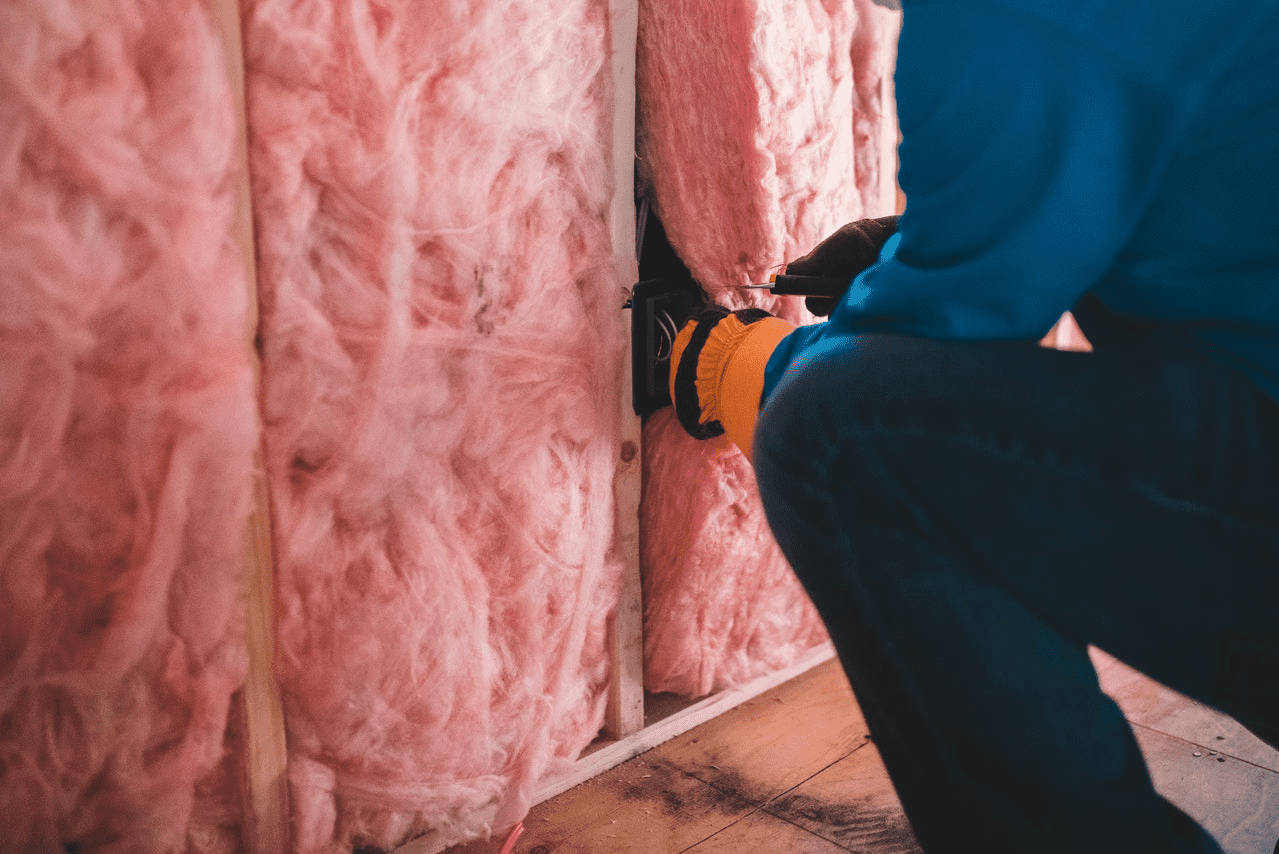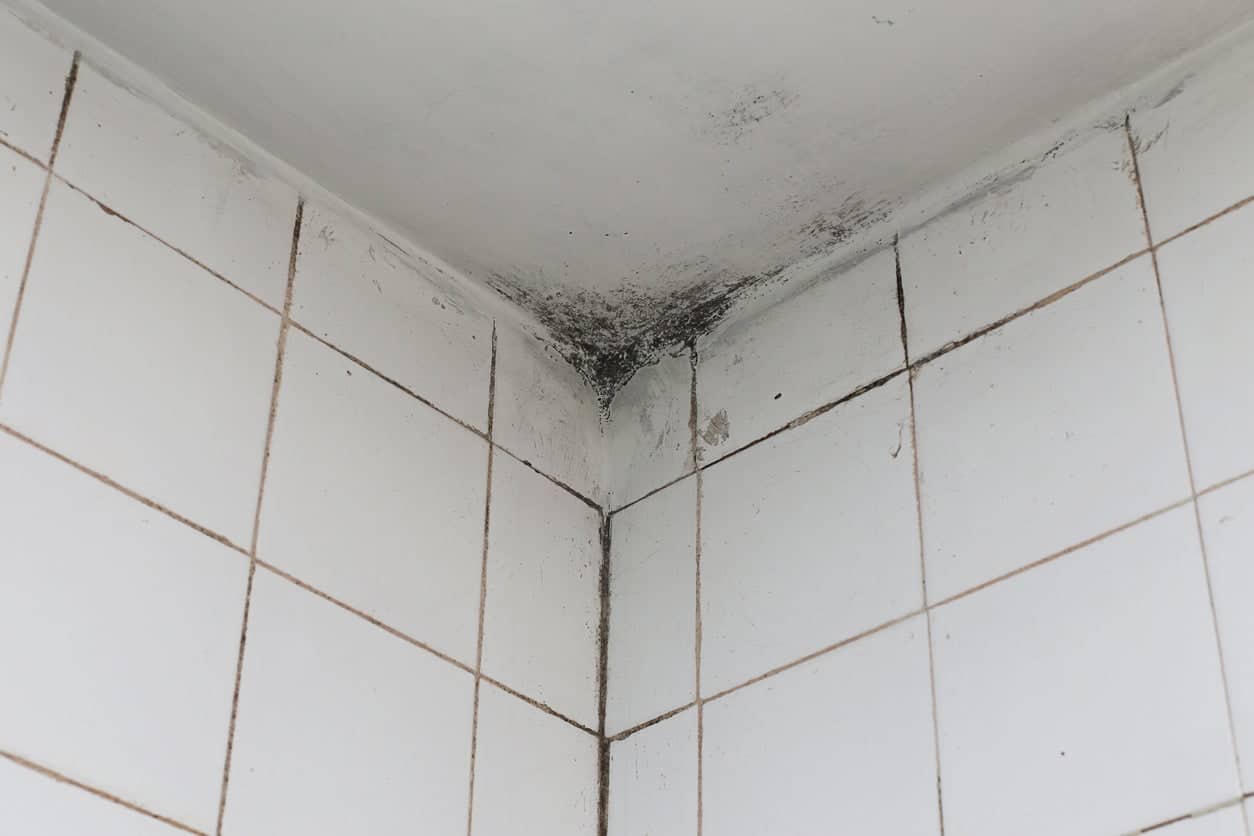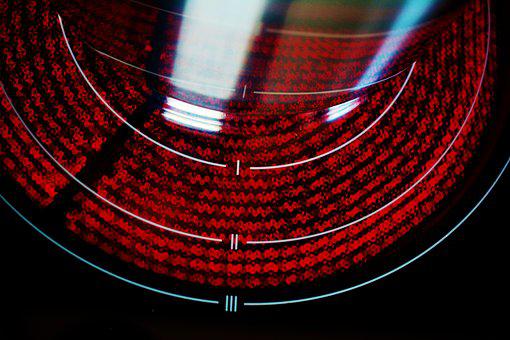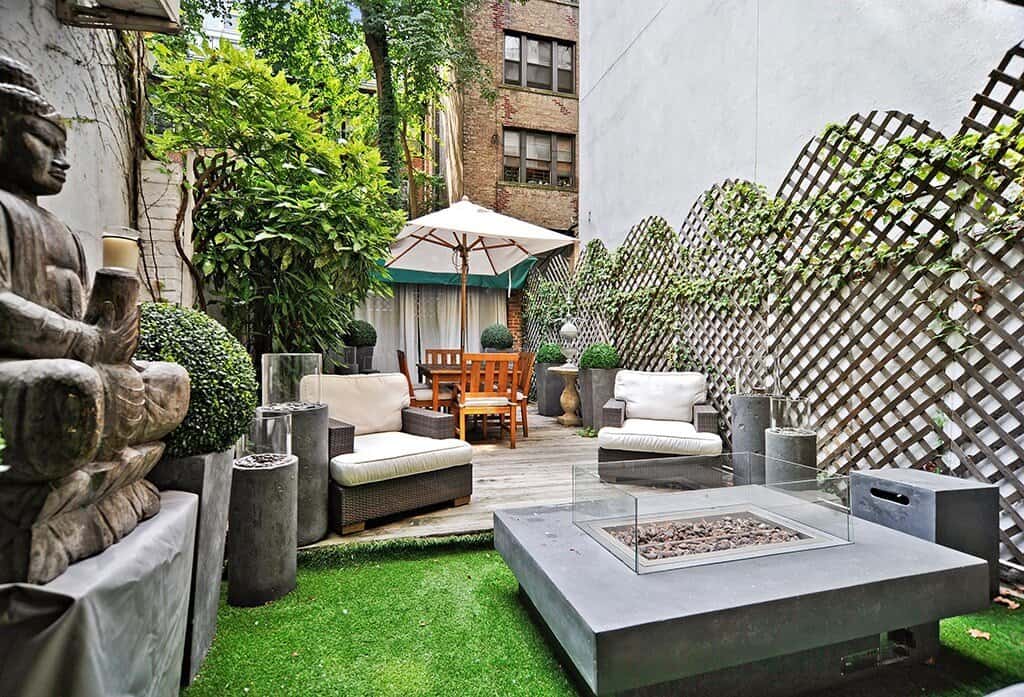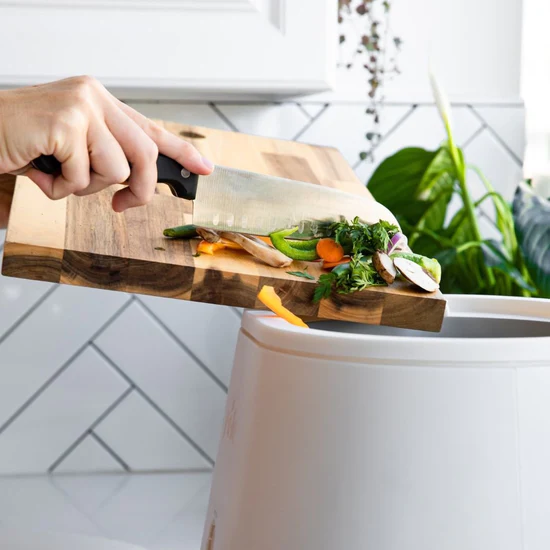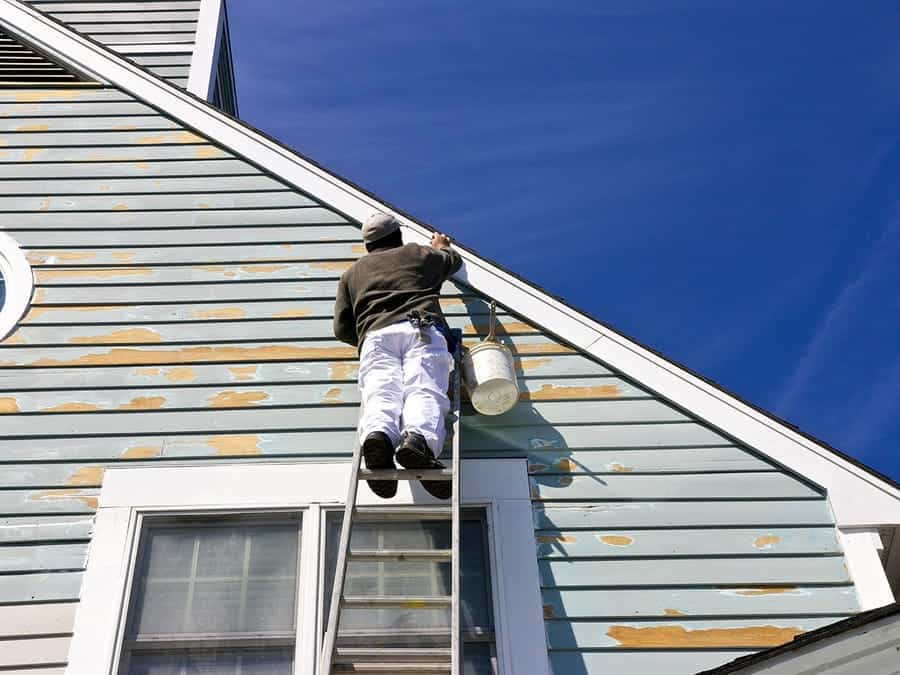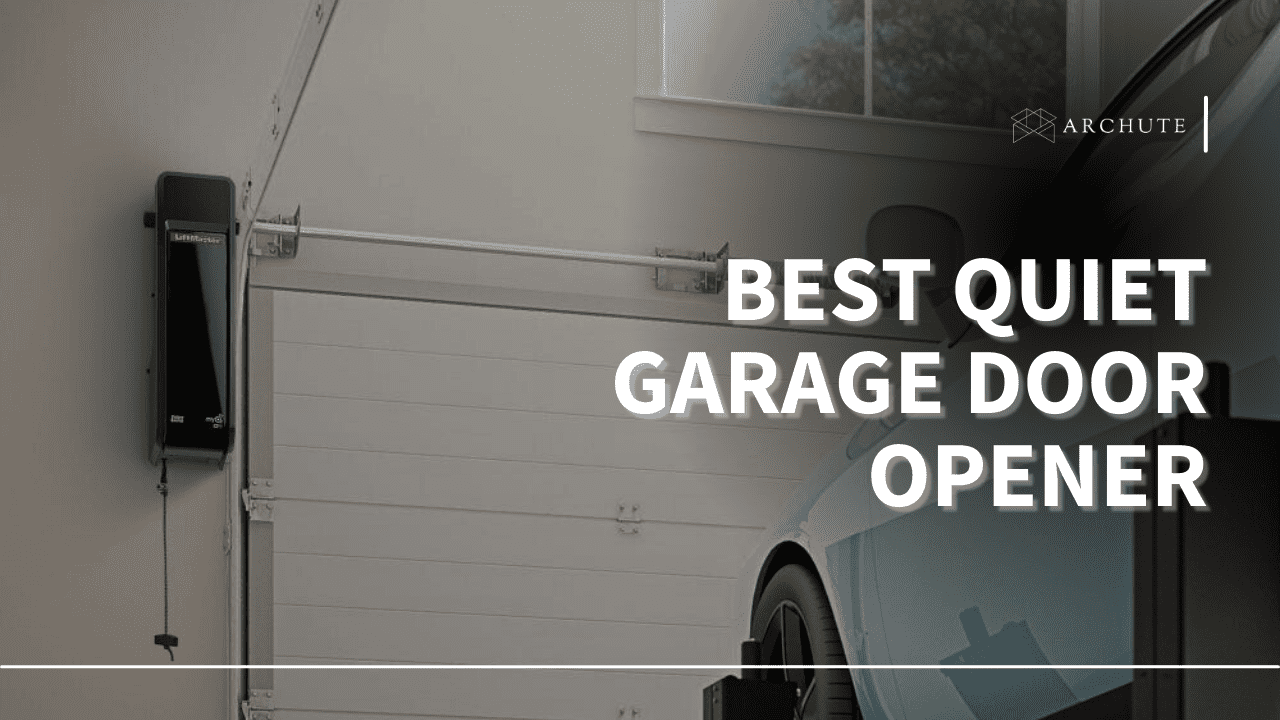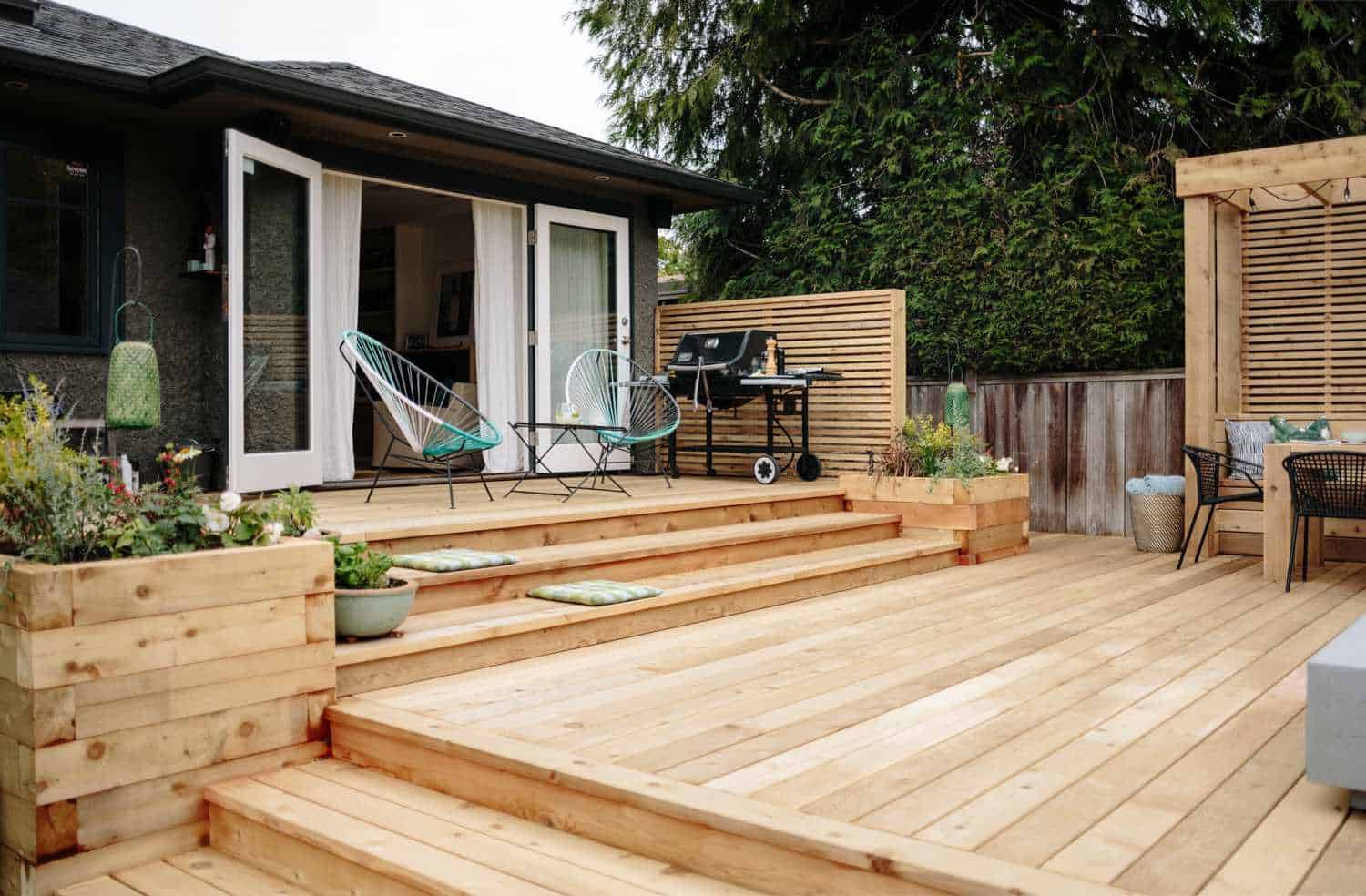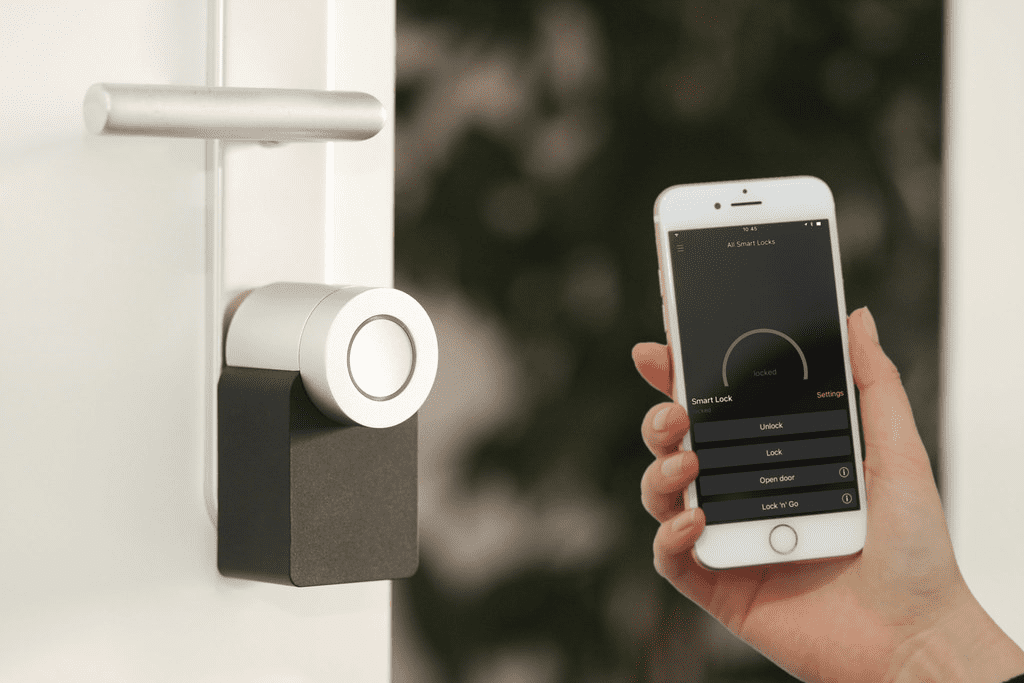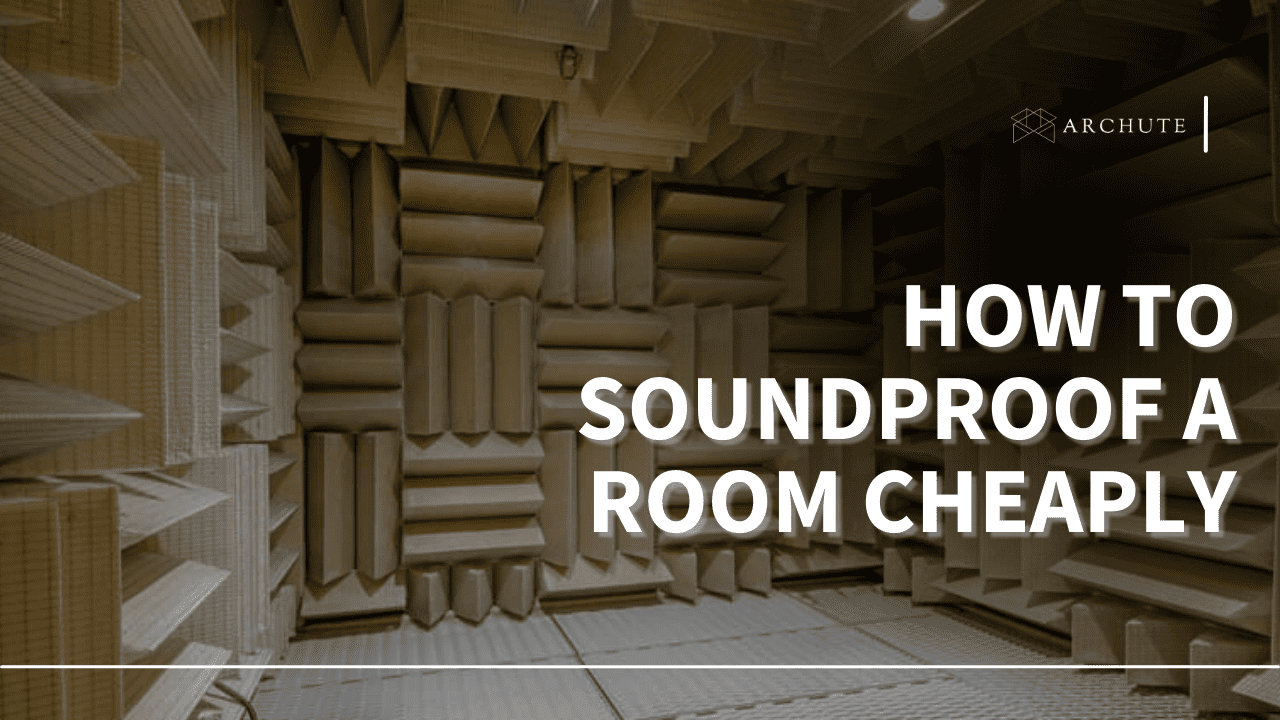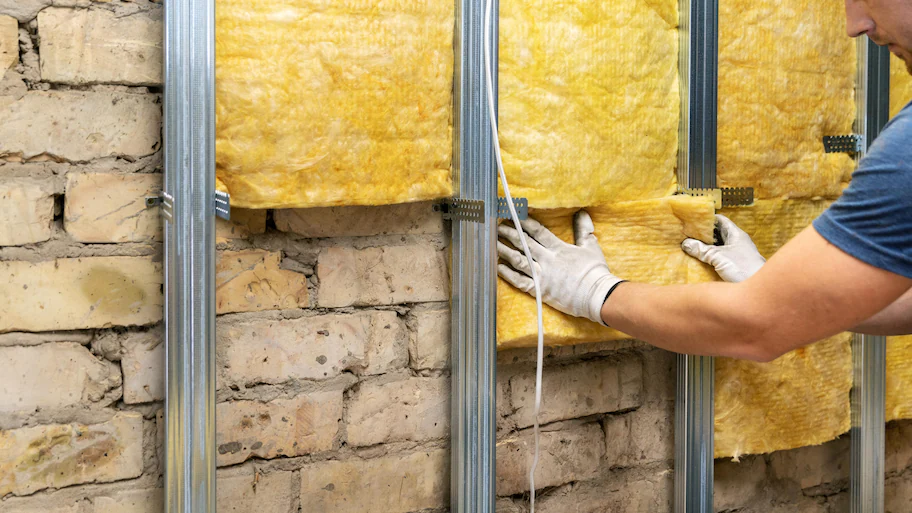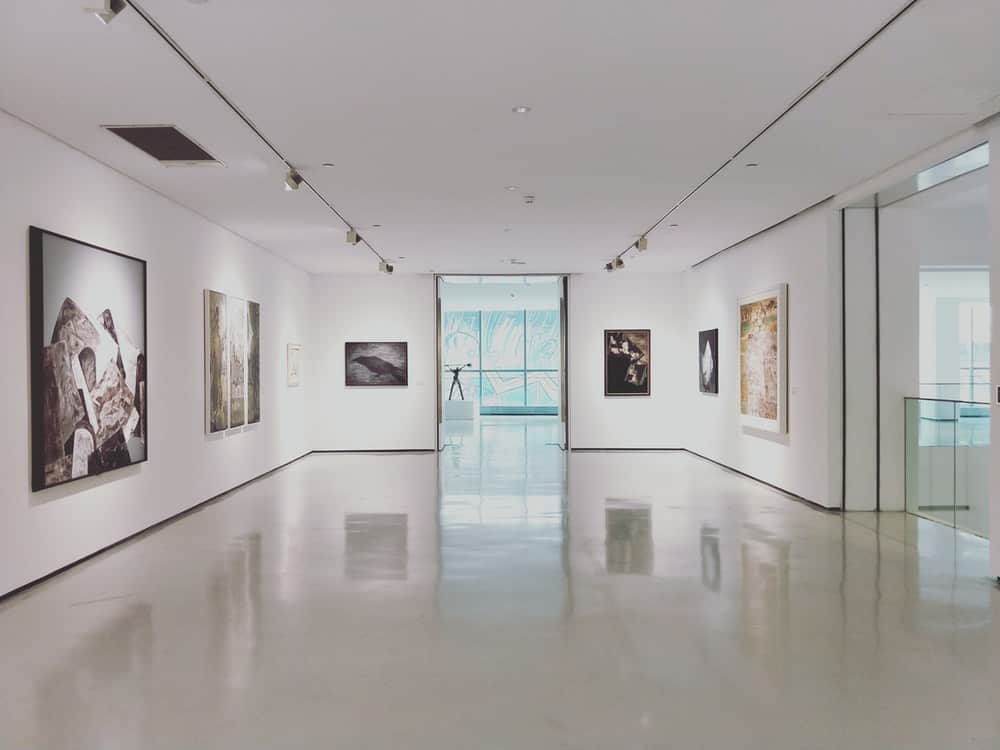Whether you want to start a podcast, a YouTube channel, or simply want some peace and quiet as you work from home, we'll show you how to soundproof a wall.
These tips and tricks apply whether you are on a budget or not and whether you own your home or not.
However, note that these soundproofing methods won't make your room 100% quiet. Most of them will only reduce loud noises and give you enough silence to work with.
Another thing to note is that you should soundproof the wall of the adjacent room you want to quiet for maximum effect. For example, if you want to soundproof your master bedroom and the adjacent room is the guestroom, you'll need to soundproof the wall of the guestroom too for maximum effect.
Now that we've got that covered, let's get started!
How to Soundproof A Wall

1. Use Mass-Loaded Vinyl (MLV)
- BLOCK AIRBORNE NOISE: 100% coverage with Luxury Liner Pro MLV...
- HOW TO USE LUXURY LINER PRO: Cover the cabin side firewall,...
- MASS LOADED VINYL + FOAM: Each 2’ x 4.5’ (9 sq ft) MLV sheet...
- 2-IN-1 AUTOMOTIVE SOUND INSULATION: Block noise and heat through...
- PROUDLY made in the USA by Second Skin Audio
Mass-loaded vinyl makes for a great sound barrier. It works great at insulating impact sound and also reducing airborne noise.
Mass-loaded vinyl does a great job of decreasing low-frequency noises (bass noise) and has the extra property of being good at sound insulation.
Several customers have noted this after using the product to soundproof their rooms. This can be great during the cold seasons and if you live in a cold place. However, if you live in a warm region, you may want to consider if thermal insulation is something you'd be okay with.
If you don't like this extra property, you can always use another soundproofing method.
2. Focus on the Weak Points on the Wall

This wall soundproofing method is great for thin walls.
If you live in an apartment building or a home with thin walls, it's time to strengthen the weak points. What are the weak points?
These are the places where the walls are thinner and let in more noise. Weak points on your walls are also the parts that have piped behind them. If you find weak points like these, a good move would be to soundproof the pipes or use soundproofing blankets over these points.
Soundproof blankets are great at absorbing noise and make for great soundproof walls. They work effectively by reducing up to 40% of noise.
Note that soundproofing blankets are heavy to carry and set up. Therefore, if you want to set up your woman cave and want to use soundproofing blankets to act as sound barriers, ensure that you get some help.
3. Apply Green Glue to Holes
- Sold in cases of 12 (29oz.) tubes per case.
- Each case comes with installation instructions (in English and...
- Better results for low frequencies
- Item package weight: 27.2 pounds
No matter how well the wall construction was done in your building, you can't miss a hole or two. These holes can be caused by cables passing through the walls or other reasons. Anyway, the sound that leaks from these holes can interfere with your activities, especially when you want silence.
So, what is the solution? Gluing the holes is a good way to go. You can use green glue to do this. Green glue works as a superb noise dampener, especially when it comes to low-frequency noises.
4. Acoustic Wall Tiles
- Made of environmentally friendly polyurethane foam. In order to...
- The sound-absorbing foam brick has beautiful appearance and good...
- Polyurethane is an ideal material for sound insulation, sound...
- It is suitable for various public places such as recording...
- Compress the packaging.High quality products.Open the package for...
These wall tiles are great for professional acoustic control. Therefore, this is a great method if you want to create your own studio in your apartment and you want an easy way to do it.
Acoustic wall tiles are easy to install, lightweight, and affordable. Another great thing about these wall tiles is that they come in various colors. Therefore, you can carefully select the ones that match your wall tiles.
You can use them for sound dampening and noise reduction, especially for apartments with thick walls. Because they come with adhesive at the back, you won't have to worry about any destructive methods.
These wall tiles are also resistant to oil and petrol, making them good for fire resistance.
5. Acoustic Foams
- [REDUCE NOISE]: Our 3D acoustically designed 2-inch sound...
- [REDUCE REVERB]: At 50/lbs per cubic yard, these sound dampening...
- [EXPANDS QUICKLY]: Our sound proof foam panels come compressed in...
- [PLACE ANYWHERE]: The soundproof wall panels are great for spot...
- [AFTER SERVICE WARRANTY]: Our US based customer service means...
Although this method of sound reduction comes sixth on our list, it's actually one of the most common methods used to block sound. Like with the acoustic panels or tiles, these foams are great for apartments and creating recording studios.
Acoustic foams are fantastic airborne insulators and cut the block noise up to 70%. In addition, you can combine them with other methods of reducing sound waves, such as using soundproofing paint.
Consider combining them with methods that combat impact sound for better sound absorption. For example, you can add some more furniture to an empty room in addition to using acoustic foams.
Unlike our previous method, this method of reducing sound transmission is good for apartments with thin wall construction and can be expensive. Nonetheless, you can be sure that these acoustic foams are durable and will do the job well.
6. Use Furniture to Fill the Empty Space

Echoing is quite common in empty spaces. Although not having furniture can seem trivial, it actually affects the room's sound quality.
You should get pieces of furniture that can absorb the sound and prevent the sound waves from bouncing off hard surfaces such as the walls.
In addition to couches, you can also work with pieces of wall art and bookshelves. The best way to block sound using furniture is to place the pieces next to the walls.
7. White Noise Machine
- 6 SOOTHING SLEEP SOUNDS – The six white noise machine sounds...
- MASK BACKGROUND NOISES - The white noise sound machine masks...
- OPTIONAL AUTO-OFF TIMER - Leave this soothing noise maker on all...
- PLUG IN OR BATTERY OPERATED - Powered by an AC adapter (included)...
- PORTABLE & COMPACT - The portable, compact design makes this...
This method is perfect if you want an immediate solution to your noise problem. It drowns the background noise and allows you to focus on something else instead of the noise that's coming from outside.
Using acoustic panels and enhancing your wall construction are effective methods, but they can take time to implement. Therefore, if you are looking for an immediate solution that is also affordable, get a noise machine and improve the quality of your life.
You can also use it in combination with other methods of reducing sound waves, such as soundproofing paint and filling in holes.
8. Using A Layer of Drywall
- ✅ Use Stella Drywall Repair Panel to patching your drywall like...
- ✅ It can be used to repair your drywall damages in home,...
- ✅ Package content: Drywall panel 6x6”x1/2 inch (actual size...
- ✅ Stella Drywall Repair Panel makes wall repairs easy and...
- ✅ With Stella Sealants, customer satisfaction is 100%...
A layer of drywall works great in combination with mass-loaded vinyl. Just like soundproofing paint, you can use it if you want to maintain your home's decor.
This is because you can paint over it and maintain the home you love. You can even use soundproofing paint over it if you want to increase the effectiveness.
9. Acoustic Curtains
- READY MADE: 2 panels per package. Each Curtain with 1.6" diameter...
- NOISE REDUCING: Detachable felt fabric liner in the middle which...
- 100% BLACKOUT: Curtains are made with 2 layers triple weave...
- THERMAL INSULATION: 3-in-1 curtains can balance room temperature...
- EASY CARE: Good quality finishing will withstand years of use....
Curtains also greatly reduce sound transmission, especially when they are thicker and heavier than normal curtains. You may not always find curtains meant for soundproofing. In this case, you can go with ones for creating thermal or blackout effects.
The inner layer of these acoustic curtains is what provides this soundproofing, thermal, and blackout effect. If you can get pleated curtains, the better. Pleated curtains have three times more sound reduction properties because they absorb sound better.
10. Soundproofing Paint
- Acousti-Coat is a thick, soft coating designed to act as a 'sound...
- Product is designed to reduce echo and uncomfortable high...
- Coverage is 50 square feet per gallon for the minimum two coats...
- ThermaCels included in this paint! This provides insulation...
- White Flat Finish. Can be tinted using universal colorants, to...
Yes. Believe it or not, there's paint that can make your room soundproof. Although it is not as effective as other methods like mass-loaded vinyl, green glue, or even acoustic wall tiles, it can still work.
Soundproofing paint is similar to normal paint except that it's thicker and has soundproofing properties. The more layers there are, the more effective the soundproofing paint is.
The soundproofing paint can reduce the noise in half, but it is unsuitable for noisy environments. Nonetheless, it does a great job of insulating low-frequency noises.
If you have leased an apartment and don't want to make huge changes, consider this method of creating soundproof walls. The sound reduction may not be as effective as other methods, but at least you still get to maintain the decor in your home and avoid getting in trouble with the landlord.
How Much Does It Cost to Soundproof A Wall?

The average cost of soundproofing a wall ranges from $1 to $5 per square foot.
However, this cost depends on the materials you want to use and the size of the room you're soundproofing.
Let's look at how much it would cost based on materials.
A) Cost of Soundproofing Walls Based On Materials

Here are various materials and the estimated amount it would cost to soundproof your room.
1. Mass-loaded Vinyl
MLV comes in a roll. This heavy and dense vinyl sheet is great for soundproofing and costs between $2 to $5 per square foot.
Once you’ve calculated how many square feet you have to soundproof, you’ll know much it will cost you.
2. Acoustic Wall Tiles
Acoustic wall tiles come in 20-inch-by-20-inch tiles. Each of these acoustic wall tiles costs around $10.
Therefore, you must measure your walls and determine how many of these tiles will be needed. You can also get wall tiles that come in other shapes. Therefore, choose the shape you want, get the measurements, and then find out how many of those tiles you’ll need.
3. Acoustic Foams
The cost of soundproofing your walls using acoustic foam is around $10 to $100 per foam panel. We mentioned above that acoustic foams are an investment, and you can see why.
Before using acoustic foams to soundproof your walls, ensure that you take the measurements to know exactly how much it will cost to soundproof your walls.
This is because you don’t want to underestimate how much you need only to end up with a half-soundproofed room.
4. Acoustic Curtains

The price of acoustic curtains depends on the brand and the type. Nonetheless, the average cost of a set of these curtains is about $100.
Find out how many sets you’ll need for the rooms you want to soundproof, and you’ve got your estimate.
5. Drywalls
An estimate of about $40 per drywall panel should do the trick. However, this depends on the company you’re buying from.
Check the size of panel that the company you’re buying from is offering and calculate how many panels you’ll need to cover your wall.
6. Textured Wall Panels
These wall panels range from $1.50 to $5 per square foot. They are easy to attach to your wall and don’t require much to install.
7. Foam Insulation
You inject foam insulation into your walls without having to remove the drywall. This means you can get a soundproof wall without causing much destruction.
The cost per square foot ranges between $1 to $3.
8. Textured Paint
Textured paint is great for walls and ceilings. It costs around $250 to $300, depending on how much wall you have to paint.
B) Cost of Soundproofing Walls Based On the Room Type

Here is an estimate of what it would cost you to soundproof your walls based on the room type. Let’s at a few.
1. Regular Room
For the bedroom or any other typical room in the house that you want to soundproof, the cost ranges from $300 to $1,500, depending on the method of soundproofing you use.
These estimates are for a typical 10-foot-by-10-foot room.
2. Garage

If you want to soundproof your garage walls, you might spend about $600. However, this is not an absolute figure and depends on the noise level and the soundproofing method.
Nonetheless, you can consider this an investment as part of your garage improvement plans. After it's done, you can use your soundproofed garage as a studio, study den, and anything else you want.
3. Gym
If you don’t want your neighbors hearing you grunting every time you work out, soundproofing your gym walls is a great way to go.
Depending on the type of walls and soundproofing methods, an estimate of $300 to $1,000 should be good.
4. Home Theater

If you can afford to get a home theatre, you can afford to soundproof the walls for a better experience. A budget of about $1,000, give or take, should be enough to get you started.
Considerations when Estimating Cost of Soundproofing A Wall

Here are some factors to consider to get the most accurate estimate of your soundproofing cost.
1. Type of Noise
The type of noise you’re dealing with will inform the method of soundproofing you go with. The two types of noise to consider are airborne noise and impact noise.
Some examples of airborne noise include muffled conversations, clear conversations, and excessive noise. Excessive noise can be hearing your neighbors arguing or the noise of the TV from the living room.
Examples of impact noise include slammed doors, drum practice, and other noises caused by two solids hitting. There’s also structure-borne noise which occurs when sound waves travel through the structure of the building.
If you have thin walls with pipes behind them that produce noise, this is a form of structure-borne noise.
Once you know what type of noise you’re dealing with, you can now get the proper method to use.
2. Wall Construction Material

Knowing the type of material used to construct your walls will let you know how much more soundproofing you need. In addition, you’ll also know whether to tear down your wall or just use another non-destructive method.
You’ll also know if you’re dealing with thin walls or thick walls, which will help you choose the right method. Some common types of materials include cement, masonry, solid bricks, block timber studs, and rammed earth.
3. Number of Openings

Wall openings invite noise in. This is both airborne noise and impact noise. Therefore, in addition to soundproofing your walls, you’ll need to find a way to soundproof these openings.
For example, you’ll know how many acoustic curtains you need once you know how many windows you’re dealing with.
Some other types of openings include those meant for cables, air vents, fixtures, and chimneys. Although you can’t soundproof every one of them, you can try and do your best.
Just focus on the openings that bring in the most noise and try and soundproof them.
4. Level of Noise
The level of noise you hear will inform the level of soundproofing you need. For example, are the noises muffled, or can you hear what program your neighbors are watching on their TV?
For example, you can’t use soundproofing paint to soundproof your walls if you live in a noisy environment. This is because you’ll still be able to hear the noise coming from outside.
Instead, use soundproofing methods like MLV and acoustic wall tiles to soundproof your walls for more effectiveness.
Frequently Asked Questions About Soundproofing A Wall

1. How much soundproofing should I use?
The amount of soundproofing you need depends on the level of noise you want to block out. If it’s muffled noise or minor noises, soundproofing curtains or soundproofing paint should do the trick.
If it’s loud noises you want to keep out, consider other options like acoustic wall tiles.
2. Can egg cartons soundproof a wall?
Egg cartons haven’t been proven to have any soundproofing properties. This is because the material is too thin, and soundwaves can still pass through.
Therefore, if you can afford to use one of the methods above to soundproof your walls, better to do that instead.

